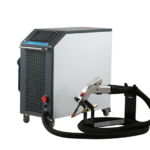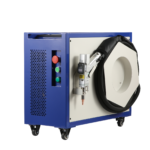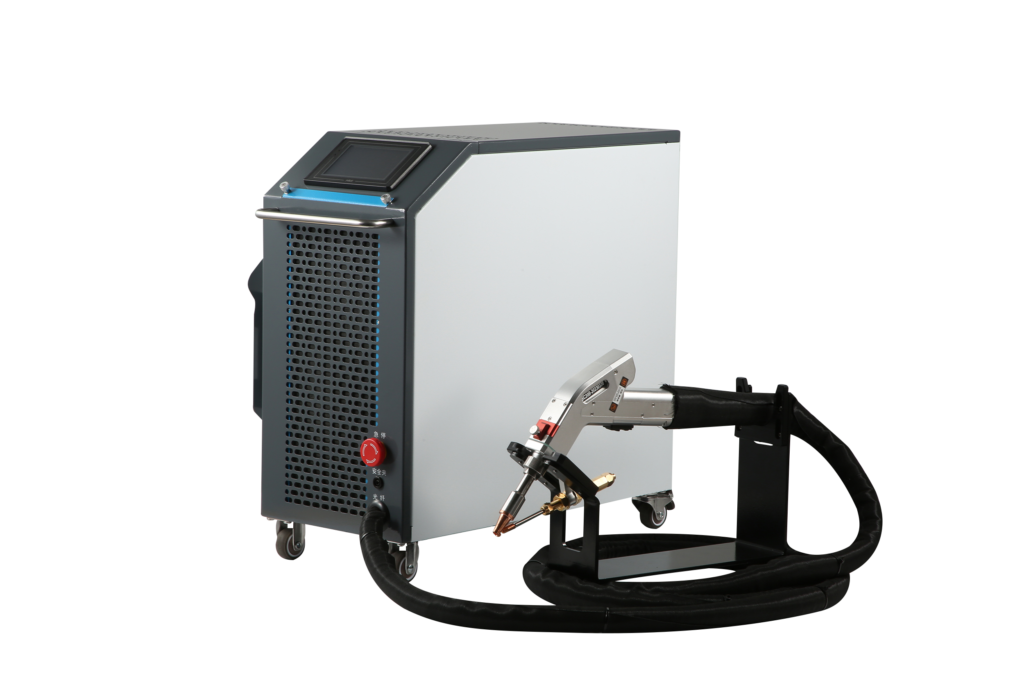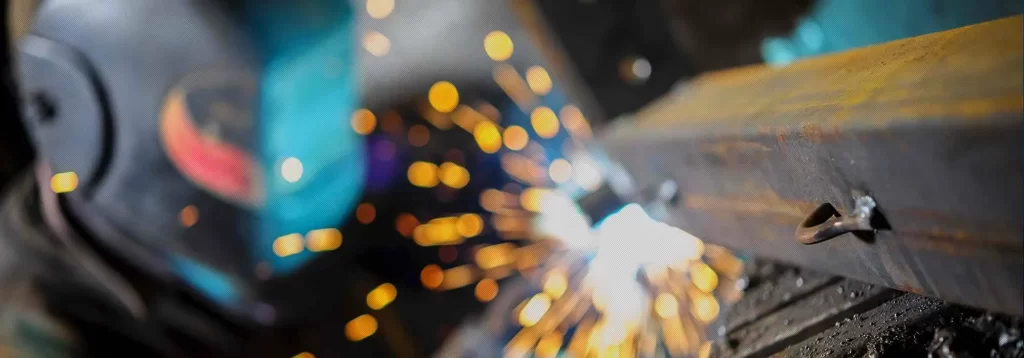Gettare le basi per l’innovazione, la tecnologia di saldatura ha trasformato la fusione strutturale nel corso di molti anni. La sua storia risale all'età del bronzo quando, utilizzando un identico procedimento di saldatura, venivano realizzate piccole scatole d'oro. Tuttavia, con l'avanzamento, nei tempi attuali il valore di mercato del settore della saldatura ha ormai superato $23 miliardi.
La saldatura laser è l'approccio più moderno alle tecniche di saldatura in questa epoca e in questo periodo. L'utilizzo di vari laser ad alta potenza e strumenti di messa a fuoco guida gli aspetti funzionali di asaldatore laser. Nelle prossime generazioni, Si prevede che la domanda di saldatori laser raffreddati ad aria supererà quella dei modelli raffreddati ad acqua. Ciò è dovuto alla diffusa necessità di apparecchiature di saldatura compatte e leggere in diversi settori industriali.
Uno di questi saldatori laser raffreddati ad aria che suggeriamo è ComWelder che è altamente conveniente ma offre risultati di alta qualità. I livelli di potenza variano tra 800 E 1200 watt tra i suoi modelli B1 e B2. Questi consumano meno elettricità rispetto alle alternative poiché sono raffreddati ad aria. È un apparecchio di saldatura versatile che può essere utilizzato in un'ampia varietà di impostazioni, compresa la casa e il posto di lavoro.
Di seguito vengono fornite descrizioni complete dei vantaggi e degli svantaggi dei metodi di saldatura raffreddati ad aria e ad acqua.

Spiegazione dettagliata della tecnologia di saldatura raffreddata ad aria
Con una struttura tipicamente piccola, Le saldatrici raffreddate ad aria sono dispositivi di saldatura compatti ma altamente funzionali. Usano l'aria come fattore principale per facilitare la saldatura. Anche questi sono adatti per un'ampia gamma di applicazioni.
Principio operativo diAir-Cooled Laser Welder
Compressed air is the fundamental component used in Air-cooled welding. All that is needed to operate is air and shielding gas within an air-cooled welding technique. The heat generated by the welding cycle needs these to disperse.
More rigid copper wiring is used in this. Because of this, the wire can carry power to the gun despite becoming too hot due to the intrinsic resistance of the wires.
The ComWelder B1 and B2 work on this principle and have unique air-cooled designs. These are effective tools employed in a diverse range of industries. This device has variants with two power outputs of 800W and 1200W respectively to cut stainless steel, carbon steel aluminum, eccetera. effectively.
The device overall is portable, weighing just below 38kg. With its compact design, users can easily take it anywhere on job sites or use it for home improvement projects without leaving any welding marks.
Physical Basis
The physical basis of air-cooled welding follows:
- The laser source generates a high-powered beam. This is then focused on the welding area by the optical focal lens used.
- The heat source typically generated by the laser beam helps in melting the parent as well as the filler metal.
- To prevent cracking and warping in the heat-focused zone, compressed air is now applied to the heated area.
- This allows the two parts of metal to fuse together and keep them in place. After this, it is left to cool so that it stays in the required shape without deformation.
Equipment Structure and Key Components
Per comprendere meglio la struttura e i componenti di una saldatrice laser raffreddata ad aria, abbiamo descritto le sue parti principali di seguito.
- La sorgente laser – questo è il componente principale della macchina. Genera il raggio laser che fa avanzare l'intero processo.
- La testa di saldatura – Contiene la sorgente laser. È interconnesso con lo scanner e l'obiettivo ottico. Aiuta a focalizzare il raggio laser sulla rispettiva area.
- Lo scanner – Può essere legato al galvanometro o meccanico. Aiuta a spostare il raggio laser sull'area saldata.
- Il sistema di raffreddamento: applica la compressione dell'aria. Aiuta anche il laser a surriscaldarsi inutilmente.
- Centro di controllo – Potenza laser, velocità, densità, e l'output sono tutti impostati da questo. Gestisce tutte le operazioni.
Professionisti
- Questo dispositivo è semplice da usare. It is easy to set up and assemble.
- Air-cooled laser welders are inexpensive and are ideal for SMEs for volume production.
- These are high-speed devices, eligible for fast working.
- It is a versatile welder as it finds applications in a number of industries including automotive and manufacturing.
- This is lightweight because compressed air replaces the water coolant. It is highly portable, and usable in many areas.
- Another benefit of this device is that it can easily work on low energy. ComWelder B1 can easily operate on a household power socket of 220V/110V. This is also eco-friendly as there is no excess energy wastage.
- There is no need to replace the coolant of for an air-cooled welder. This makes it easy and convenient to use.
Cons
- Due to long hours of continuous working, there can be potential heat build-up. This can malfunction the drive easily If the heat isn’t dissipated correctly.
- If a fan with a strong airflow is used in this welder, it can create some noise, which can be a handicap
Detailed Explanation of Water-Cooled Welding Technology
A powerful and high-stress enduring technique that employs water as a cooling aid in welding is the water-cooled welding technology. The welding machine used for this purpose is heavy yet can create the desired results with no material oxidation. It has a distinct range of applications in several commercial sectors.
Operational Principle of Water-Cooled Laser Welder
A water-cooled welding technology draws a coolant liquid via a pump that is situated in a radiator. Questo è spesso incluso o vicino all'alimentatore. Viene raccolto nell'impugnatura tramite tubi di raffreddamento nel cavo di alimentazione. Il fluido di raffreddamento ritorna al radiatore. Qui, il calore catturato dal liquido di raffreddamento viene dissipato tramite il processo di deflessione del radiatore. Inoltre, l'aria circostante e il gas di protezione aiutano a distribuire la radiazione dell'arco elettrico.
Physical Basis
Seguono le basi fisiche di un sistema raffreddato ad acqua:
- Grazie alla sua eccellente capacità termica specifica, l'acqua funge da efficace fluido di raffreddamento.
- Il sistema di raffreddamento è la parte principale per raffreddare la sorgente laser.
- Una pompa muove costantemente l'acqua all'interno della copertura.
- Assorbe il calore in eccesso del laser e lo rilascia lentamente.
- Dopo il processo di raffreddamento, l'acqua viene pompata nuovamente nel sistema.
Professionisti
- Un raffreddato ad acquasaldatore laser è molto utilizzato in molte applicazioni industriali grazie al suo meccanismo di raffreddamento rapido.
- Ciò crea anche saldature incontaminate e precise poiché non vi è alcun accumulo eccessivo dovuto all'acqua.
- La macchina è considerata altamente stabile poiché il liquido refrigerante le consente di raffreddarsi piuttosto immediatamente.
- Questo strumento ha generalmente un'elevata durabilità con una durata di circa 5 anni. I suoi componenti durano più a lungo di quelli di altri saldatori laser.
Cons
- Uno svantaggio di questo saldatore è che è costoso da acquistare.
- Accanto a quello, ha costi operativi elevati.
- Dopo qualche tempo è necessario sostituire il liquido refrigerante e pulire l'apparecchiatura. A causa della manutenzione elevata, non è l'ideale per l'uso.
- Le macchine raffreddate ad acqua sono pesanti da spostare, il che ne diminuisce la comodità.
- These have an excessive overall power consumption as a result of the significant electrical usage of the water-cooling system. This means that the total power consumption is considerable and is not eco-friendly.
The Similarities and Differences Between Water-Cooled Welding Machine and Air-Cooled Welding Machine
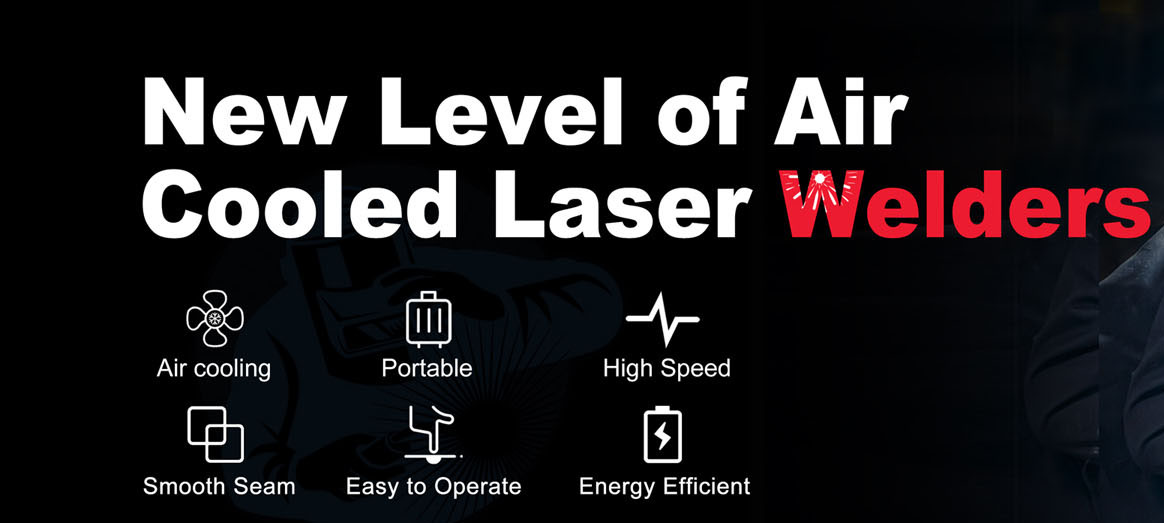
With the industry standards, both air-cooled and water-cooledsaldatura laser are utilized in various sectors. To understand the technical comparison of both, the subsequent information is compiled from multiple sources. These involve product descriptions provided by producers, studies from relevant industries, and feedback from users.
Similarities
1. Welding Speed
The welding speed of air-cooled laser welders is high. It can be 20-100mm/sec and can weld bulk products within a span of some time. ComWelder B1 can weld up to 10 pollici al minuto, which is excellent for manufacturing industries.
Water-cooled laser welders also have a high welding speed, which is 10 pollici al minuto.
2. Welding Quality
Exceptional welds may be created with either an air-cooled or water-cooled laser welder. These are widely recognized as reliable and capable of effective workability.
3. Range of Materials
Air-cooled welder has the capacity to weld all metals ranging from stainless steel to copper. Its range makes it a favorable tool to be used in several sectors. ComWelder B2 is ideal in this regard. Water-cooled welders are similar to this and can help fuse an extensive array of substances which include metals, plastica, eccetera. This makes both of these options ideal in terms of material range.
Differences
1. Heat Dissipation
Air-cooled laser welders have high heat dissipation because of the compressed air applied to the welded area. Water-cooled welders on the other hand have higher heat dissipation because of water-focused cooling ability.
2. Portabilità
Due to the water-filled system, water-cooled welders are heavy. This makes them not ideal for site-focused jobs. Tuttavia, air-cooled laser welders use air as a coolant, which makes the equipment really light. This makes them portable and convenient for use. ComWelder B1 and B2 are lighter, weighing only 38kgs, which makes them convenient.
3. Costo
The air-cooled laser welders have low initial costs as well as low maintenance and repair costs as per industry data. Water-cooled laser welders are expensive. Their maintenance is required regularly, which is particularly expensive.
Statistical study demonstrates that air-cooled laser welders have several benefits over water-cooled ones. They provide quality welds, cost less, and demand less upkeep. Air-cooled laser welders are suitable for high-speed, superior welding. A compact, inexpensive air-cooled laser welder is an appropriate choice.

Experimental Design and Methods
For experimental purposes, a controlled material for welding is used. Two samples of materials are taken. One is welded with an air-cooled laser welder and the other with a water-cooled laser welder. A measuring device along with a computer is used to analyze the data. Use the same setting for each welding device under the same conditions. The data drawn from the experiment can depend on the upper measures and the results gathered.
Fields of Application and Case Studies
Along with various features, there is a range of applications for both devices.
Typical Applications of Air-cooled Welding
1. Thin Material Welding
Air-cooled laser welders specialize in welding thin and delicate materials efficiently. Sheet metal is used in this regard. Their heat is focused and limited, reducing the heat-affected zone (HAZ) and preventing the material from burning.
2. Inexpensive Material Welding
These are employed by SMEs and hobbyists generally. They are used to welding cheap material with less wastage. Mild steel and aluminum are ideal for this. ComWelder B1, accordingly, can weld a variety of materials rapidly with low power consumption.
3. Limited Area Welding
The areas that are difficult to reach such as car parts, motori, and internal elements of a machine can be welded using air-cooled welders. These are great to get to confined spaces and weld any parts or joints effectively.
4. Active Welding
For on-site welding, air-cooled welders are excellent due to being light. These can be easily carried anywhere for repairs, maintenance work, and other tasks.
Typical Applications of Water-cooled Welding
1. High-Stress Welding
Water-cooled laser welders are ideal for continuous work constructing and joining high-stress parts. Beams and pressure vessels can be welded easily using this. These are prone to ensure high stress levels for which such devices are utilized.
2. Thick Material Welding
Metal pipes and steels can easily be fused using water-cooled welders. Le lamiere spesse di metallo e altri materiali sono difficili da sciogliere, e la profondità di saldatura di questo dispositivo aiuta in questo senso.
3. Saldatura resistente all'ambiente
Questi sono costruiti in modo tale da essere resistenti agli elementi ambientali. Questi possono quindi essere utilizzati in luoghi esterni difficili e cantieri umidi.
Analisi di casi e condivisione di esperienze
Di seguito vengono forniti esempi di casi e approfondimenti ottenuti utilizzando la saldatura laser raffreddata ad aria e ad acqua.
Argomento di studio:
Saldatura di materiali sottili mediante saldatrice laser raffreddata ad aria
I produttori di dispositivi medici spesso utilizzano saldatori laser raffreddati ad aria per unire componenti sottili come lamiere. I saldatori laser che utilizzano il raffreddamento ad aria possono unire in modo sicuro componenti fragili senza scioglierli o distorcerli. A causa della natura critica della produzione di apparecchiature mediche affidabili ed efficienti, this is crucial for the business.
Experience Sharing:
The portability of air-cooled laser welders is an advantage.
One worker described their experience utilizing portable, air-cooled laser welders. These are reportedly easy to carry about. They were able to weld in inaccessible areas since they are portable. According to the report, the cost of air-cooled laser welders is much lower than that of water-cooled models. Because of this, they were an appropriate choice for them.
Selection and Decision Factors
After discussing all details along with variable features, the final selection and decision-making require investigation. Consideration of a few factors between air-cooled and water-cooled laser welding is required, as elaborated below.
Investment and Operating Cost Analysis
According to the data, il costo di investimento iniziale delle saldatrici laser raffreddate ad aria è simile a quello delle saldatrici raffreddate ad acqua. D'altra parte, il prezzo della manutenzione varia ampiamente tra i due. Quando i costi energetici sono inclusi, la differenza di spesa aumenta ulteriormente. Rispetto a una saldatrice raffreddata ad acqua , utilizza un saldatore raffreddato ad aria 50% meno energia. Il risparmio annuale per questo è $2,000.
Adattabilità tecnica e scalabilità futura
Sia i saldatori laser raffreddati ad aria che quelli ad acqua possono essere modificati per funzionare con tecnologie e metodi innovativi. La saldatura di materiali pesanti o che richiedono molta energia potrebbe essere più appropriata per la saldatura laser raffreddata ad acqua. Quando l’accessibilità o le finanze sono fondamentali, i saldatori laser raffreddati ad aria possono essere l’opzione migliore.
The demands of mass manufacturing and future scalability may be met through air-cooled and water-cooled laser welders. But water-cooled laser welders can be superior in strength and endurance for this purpose. With their lower price tag and greater portability, air-cooled laser welders might be ideal for midsize factories.
Safety, Environmental Considerations, and Regulatory Compliance
The intense heat from air-cooled laser welders may burn skin and clothes. Fumes from them may be dangerous when inhaled. Vaporized water is the byproduct of water-cooled laser welders. Water vapor may burn flesh and clothes as well. Inhaling it in high amounts is likewise dangerous.
All the water used in operating an air-cooled laser welder is recycled, and the machines use less electrical energy overall. L'acqua in eccesso proveniente dalle saldatrici laser raffreddate ad acqua deve essere gestita in modo appropriato.
Tendenze future e sviluppi tecnologici
La tecnologia della saldatura laser e la domanda dei consumatori sono collegate. L'investimento in uno sviluppo rivoluzionario nasce dalla necessità di estendere la saldatura laser rispetto alle tendenze future. La ricerca ha prodotto risultati più forti, più accurato, e saldatori laser adattabili.
- Per soddisfare i requisiti di saldatura di sostanze sottili, Sono stati sviluppati saldatori laser raffreddati ad aria. La necessità di saldare componenti ingombranti ha dato origine ai saldatori laser raffreddati ad acqua.
- I laser potenti e orientati alla precisione consentono ai saldatori laser di effettuare giunzioni più dense, maggiore riflettività, e sostanze a geometria complessa.
- I saldatori laser efficienti ed ecologici espandono la saldatura laser nei settori emergenti.
- Queste tendenze suggeriscono che la saldatura laser continuerà a progredire. Questo diventerà alla fine un metodo di saldatura flessibile e produttivo.
- Le innovazioni future includono i laser a fibra. Man mano che vengono creati nuovi metodi di saldatura, i saldatori laser possono essere utilizzati per collegare una maggiore varietà di componenti e materiali.
- Lo sviluppo di software innovativi semplifica il processo di installazione e funzionamento delle saldatrici laser.
Nota conclusiva
La saldatura laser è presente nei settori della produzione e della manutenzione da diversi anni. I saldatori laser raffreddati ad aria e ad acqua hanno visto un enorme utilizzo in diversi settori grazie alla loro natura di saldatura flessibile. Tuttavia, a causa della velocità complessiva di saldatura, qualità, gamma di materiali, costo, e le applicazioni nell'industria la saldatura laser raffreddata ad aria è la scelta preferita.
ComWelder B1 con la sua elevata potenza e alta precisione con bassi costi di manutenzione può essere un'opzione ideale. Ci auguriamo che questo articolo approfondisca in modo efficace tutti i dettagli riguardanti i principali vantaggi e svantaggi della saldatura laser raffreddata ad aria e della saldatura laser raffreddata ad acqua..

